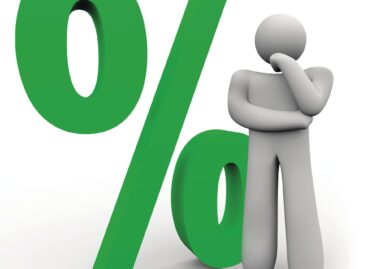Recalibrated Consumption Dynamics in a COVID-19 Altered World
As many markets across the globe begin to ease living restrictions and many consumers start to take tentative steps outside their homes, the world they are returning to is far different from the one they left at the beginning of the year. With significant new cases of the novel coronavirus (COVID-19) still prevalent in many markets and threats of a second wave, any return to a new normal will be a “mixed scenario” for the majority of markets where the virus is managed but not eliminated. Even as governments attempt to kick-start their economies by lifting quarantines and restrictions, many are implementing additional precautions across all aspects of society.
Nielsen has identified three distinct time horizons for global market regeneration beyond COVID-19 and outlined the conditions for businesses to Rebound, Reboot or Reinvent as they confront potentially unprecedented recessionary conditions. With each of these scenarios, the retail environment that consumers face and the disposable money they have in their pockets to spend will be vastly different from the world they knew pre-lockdown.
As unemployment levels around the world skyrocket and economic and business forecasts plunge, two types of consumers are emerging. Firstly, there are those relatively unaffected or insulated from health or income loss who have similar or even more discretionary income due to their inability to spend on out-of-home eating, entertainment, travel, etc. And in contrast, there is a second group of consumers who have had their income and spending significantly curtailed or constrained due to unemployment, furloughing or other COVID-19-related challenges.
Nielsen has identified six major areas where consumption dynamics will change moving forward in this unprecedented environment—and will have differing impacts for these two consumer groups.
- Wallets adjustments based on circumstance
Consumers will adjust how they allocate their available spend depending on their circumstances. For some, initial cutback measures will be precautionary, but as living restriction horizons extend, these measures will become mandatory as incomes are further compressed and strained.
Insulated consumers, predominantly those middle to higher income, with minimal or no employment impact as a result of COVID-19, will have more freedom to buy what they want and need and may even trade up in certain categories to replace the “out of home” experience that has been out of reach amidst restrictions. However, as horizons expand, even this group will become increasingly cautious with their spend, thinking “they may be next,” resulting in a focus on savings and cutting back on higher-value discretionary spend.
Constrained consumers, often lower income but not exclusively, will be looking for value and seeking ways to make savings in their everyday lives given their new financial restrictions. As their uncertainty extends depending on the length of this situation, their cut backs will start to become more desperate and even small indulgences will be scaled back as they seek cheaper alternatives or avoid certain purchases altogether.
- Rebalanced FMCG Baskets
As China initially began to ease its lockdown, we first noticed the development of a “homebody economy”—driven by consumers’ choice to increasingly live, eat and entertain at home even as living restrictions ease. Since then, we’ve seen evidence of this trend spreading to other markets, and it will likely continue to be the default for months to come. The fast-moving consumer goods (FMCG) industry has already and will continue to benefit from this shift to in-home consumption, but there will be a rebalancing of category and price tier repertoires within.
Insulated spenders will initially splurge on discretionary grocery items post lockdown—including luxuries, treats and premium lines. They may choose to supplement home cooking with prepared meals/kits, adding back takeaways and home deliveries. Constrained spenders may allow small treats like beverages or confectionery in the short term, but as timelines extend, they will seek out cheaper alternatives, downgrading to value brands and private labels predominantly on staple categories. But the longer the horizons continue, they will become increasingly reliant on these cheaper alternatives across their full repertoires. They will also seek out manufacturer and retailer support via capped prices to afford the daily essentials, and in the worst possible scenarios, government aid for basic living/food support.
- Reassessed Pricing Mechanisms
The retail environment has fundamentally changed amid months of restricted living. Stockpiling, out of stocks and supply chain challenges meant that in many markets, promotional programs came to an abrupt halt, or were significantly cut back. Having broken the cycle of promotional reliance, consumers’ perception of value and price sensitivity will change the longer restrictions remain in place. Retailers and manufacturers have the opportunity to “reset” what value means to consumers and how they are best placed to meet the new needs moving forward.
The effectiveness of pricing mechanisms will differ by category in today’s new retail reality. For some non-expandable categories that benefited from quarantine living like specific staples and essentials, promotions are going to remain less effective than they were pre-crisis. But other categories, like out-of-home/on-the-go snacks, confectionery and soft drinks, may continue to depend on promotions to entice in-home consumption and invigorate demand even as some living restrictions ease.
But this situation offers retailers and brands the chance to rethink and reset their direction moving forward. Everyday low prices (EDLP), shallower discount levels, economy or bonus packs may be better ways to incentivize loyalty to both brands and retailers as consumers continue to limit their number of shopping trips and visits to multiple stores once stock levels start to stabilize.
As supply chains faltered and stock replenishment and delivery issues prevailed during initial lockdowns, the retail environment also became increasingly fragmented with smaller retailers, direct-to-consumer models and specialty stores filling the void and offering alternatives to traditional retail channels. Moving forward, this fragmentation will test consumers’ traditional store loyalties as restrictions lift and stock levels normalize. It will be paramount for retailers to understand the unique consumer needs and priorities of different groups. This will ensure they’re able to offer tailored pricing offerings to retain consumers moving forward and ensure profitability in these challenging times.
- Reprioritized Values
In this new world, health, safety and quality assurances have become important accelerators in brand/product decision making and will remain significant choice drivers into the future. Consumers will reassess the brand aspects they value most, with some attributes rising in importance, or being prioritized over others.
For example, the sentiment around staying safe and hygienic has amplified the relevance of certain product claims. Research from Nielsen BASES has found that consumers now believe that homecare product claims focused on killing germs, providing immunity and overall health promotion are more relevant than claims around naturalness, sustainability, quality and brand. Whereas for food and beverage products, consumers are prioritizing products with health defense benefits, particularly those that offer immunity benefits, as well as quality and natural products.
Understanding what product claims are most important to consumers across different categories will not only drive loyalty but allow brands to identify the attributes that consumers are willing to pay a premium for. It also gives retailers the opportunity to optimize space in store and assortment on shelf and prioritize the products that best fit consumers’ new needs. If living restriction horizons stretch out and supply chains become even more restricted, it is unlikely that retailers will go back to the historical complexity of long product assortment tails.
Brands will need to truly differentiate themselves, with a focus on new consumer priorities, to ensure they deserve to be on shelf, by offering true incrementality for each item in a given range. Manufacturers that are ready with these insights at the start of the post-COVID-19 negotiations stand a chance to earn shoppers’ loyalty longer-term and keep their place on shelf.
- Rising Origin Preferences
Local origin has become an important accelerator in brand/product decision making during COVID-19 and will remain a major choice driver into the future. Much of this has been due to interrupted global supply chains, as well as the need for local transparency and trust of ingredients and sourcing.
Even before the living restrictions of COVID-19, we saw that there was an increasing preference for local brands. As lockdowns were implemented, consumers increasingly came to rely on and trust local and micro-local products, and in many instances, local has been the only source of available products. As living restriction horizons extend, local origin will become increasingly important for retailers who want a guarantee of supply, but also for consumers who will want to purchase brands that support their communities and boost their economies. This will become even more evident the longer COVID-19 conditions continue.
Local goods may hold one way to protect and rebuild economies. Governments could look to incentivize local production, enabling ongoing access to affordable local products, which will lead local providers to expand and grow their product portfolios and infrastructure. Depending on what taxes or regulations governments exercise, local brands may enjoy subsidies or price protection that they have not seen after years of free/open trade conditions. This has huge implications on retailers and manufacturers in terms of assortment in stores and production facilities to ensure multinational companies and local players can play to local strengths.
- Reset brand relationships
During lockdowns, many brands have struggled to determine their optimal level of marketing and advertising. Early 2020 campaigns were quickly outdated and irrelevant to the new world, and companies struggled with the tone of messaging, frequency of communication and level of engagement, in addition to slashed budgets due to declining sales.
For many consumers, this has come across as lack of care, empathy and consideration for what they have faced. The longer brands remain dark, the more consumers have turned to those who are perceived to be active and supportive. Authenticity, trust and empathy have been the winning traits of those brands that remained “on air” and relevant to consumers emerging needs.
As brands start to reinstate their marketing activity and messaging, they will need to look at where audiences have shifted their listening, viewing, engaging and socializing, as well as how they will need to repair broken relationships or strengthen new ones. Digital and virtual engagement will need to be a substantial new focus area for marketers. As horizons stretch out, consumers will increasingly value connections with brands they trust and who showcase they care about them and their communities.
Related news
The future of AI agents: key predictions and trends for 2026
🎧 Hallgasd a cikket: Lejátszás Szünet Folytatás Leállítás Nyelv: Auto…
Read more >How to prepare Christmas dinner on the kitchen stove?
🎧 Hallgasd a cikket: Lejátszás Szünet Folytatás Leállítás Nyelv: Auto…
Read more >Related news
How do young adults celebrate?
🎧 Hallgasd a cikket: Lejátszás Szünet Folytatás Leállítás Nyelv: Auto…
Read more >Vajda-Papír celebrates Ooops!’s 15th anniversary with a hybrid AI campaign
🎧 Hallgasd a cikket: Lejátszás Szünet Folytatás Leállítás Nyelv: Auto…
Read more >Pre-holiday shopping at up to half price
🎧 Hallgasd a cikket: Lejátszás Szünet Folytatás Leállítás Nyelv: Auto…
Read more >






